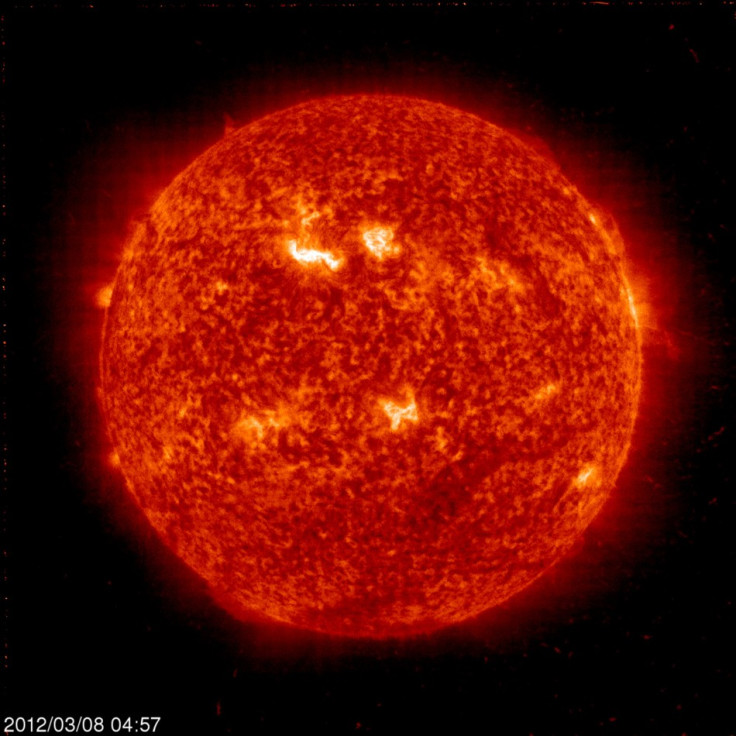Solar Storms: Scientists Develop Early Warning System

Even as a huge X-class solar flare heads towards earth posing a possible threat to the electrical system, Global Positioning System (GPS) signals, satellites, spacecraft and astronauts, scientists have developed a warning system to predict solar storms three hours before they reach earth.
Scientists from the University of Delaware, the Chungnam National University and Hanyang University have developed the system that is capable of forecasting the radiation from solar storms well in advance which could help astronauts and pilots to be prepared for solar storms.
"Travelling nearly at the speed of light, it takes just 10 minutes for the first particles ejected from a solar storm to reach earth," said Prof John Bieber, scientist at the University of Delaware, in a statement. "These sun storms can cover thousands of miles on the sun, like a wave of exploding hydrogen bombs."
To create this unique solar warning system, scientists analysed data collected by two neutron monitors in the South Pole.
Researchers installed two neutron monitors at the South Pole, one inside and the other outside the Amundsen-Scott South Pole Station, to determine the intensity of the high-energy, fast-moving particles that arrive to earth first from solar storms. These particles can carry energies over 500 megaelectron volts (MeV) - that is, over 500 million electron volts.
The technology works by examining the properties of these first-arriving particles. Scientists claim that first-arriving or fast moving particles are less powerful compared to the slow moving particles.
"These slower-moving particles are more dangerous because there are so many more of them. That's where the danger lies," Bieber said.
According to the scientists, when these first particles hit the air molecule in earth's atmosphere, they blast apart into tiny pieces, which, in turn, slam into other air molecules; and then neutrons are produced in the air.
Scientists calculate the neutrons present in the air and estimate the intensity of the later-arriving, more dangerous particles.
"Depending on the protons' energy, the system provides a warning time up to 166 minutes. That would give astronauts on deep space flights time to seek out an armoured area in their spacecraft," Bieber concluded.
© Copyright IBTimes 2025. All rights reserved.





















